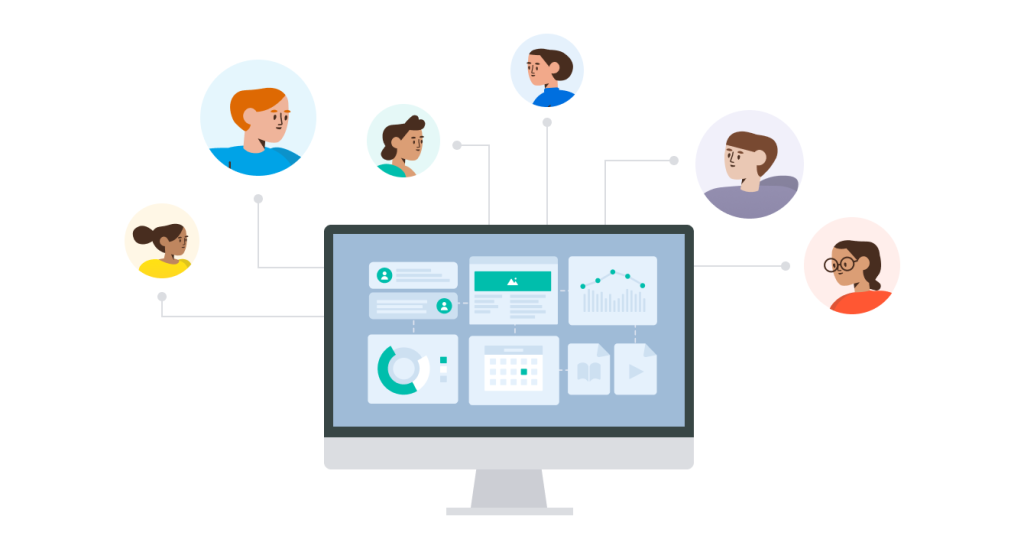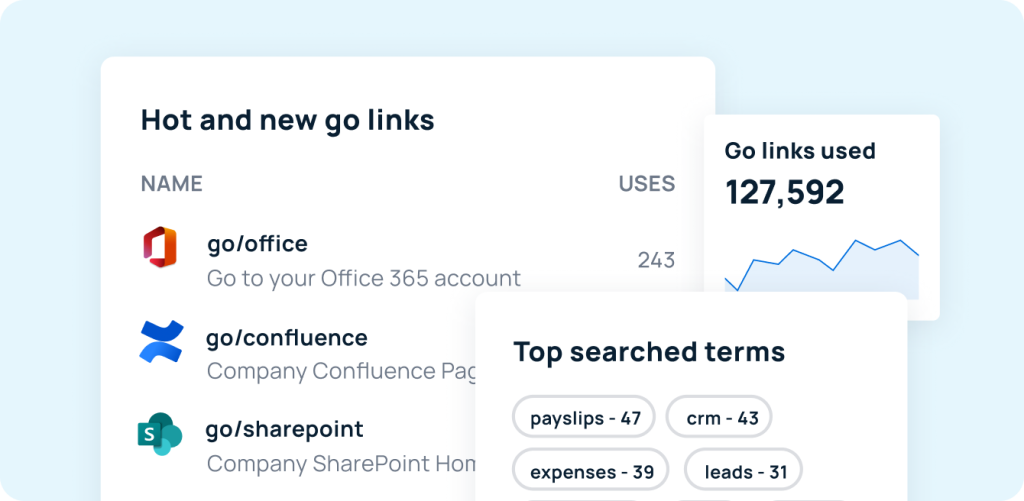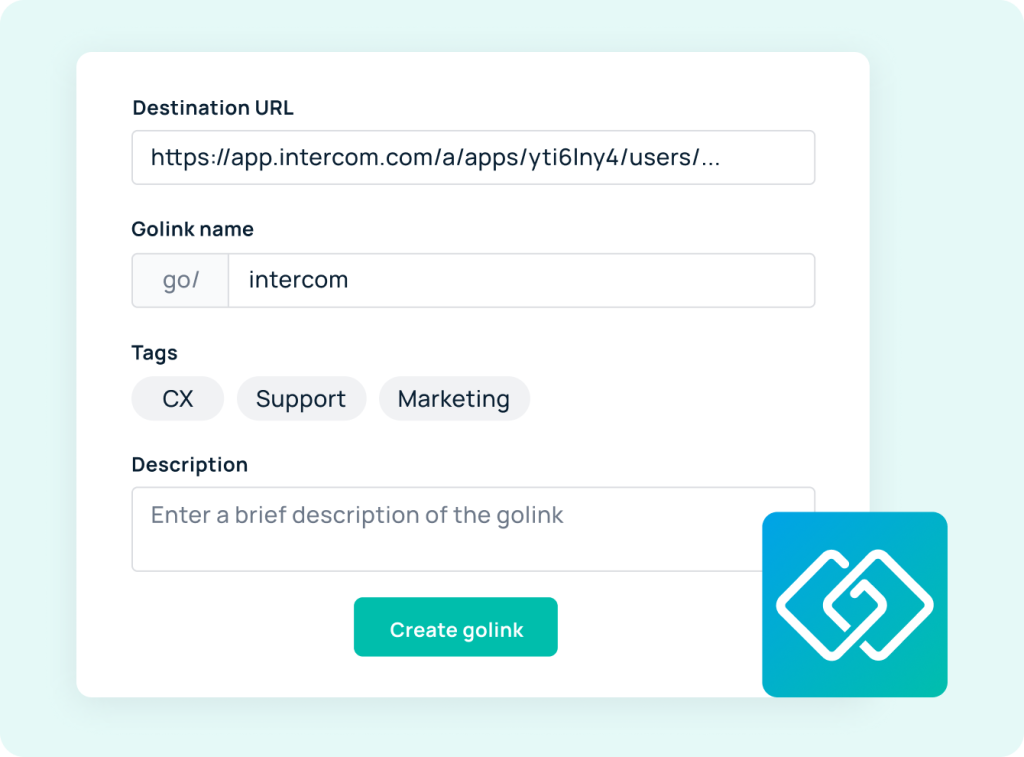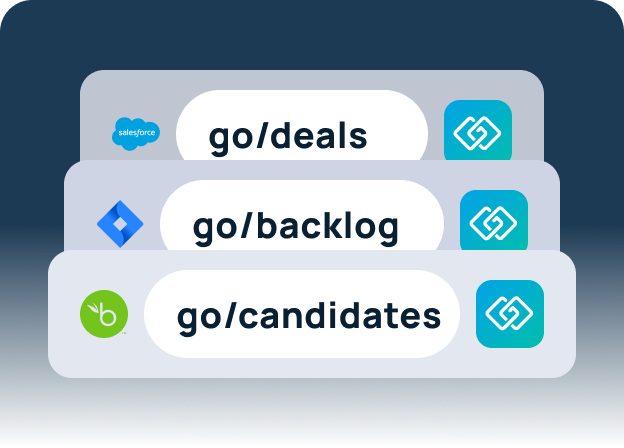We all work better when things are organized. Whether you’re searching for a file, tracking down onboarding materials, or looking for that one report someone shared weeks ago, disorganization slows you down. What’s in those documents, chats, and emails is more than just information—it’s knowledge.
And how your organization discovers, captures, organizes, and uses that knowledge defines your knowledge management process.
An effective knowledge management process turns individual expertise into collective intelligence. It empowers employees to work smarter—not harder—by accessing the right information at the right time. In today’s hybrid, global, and fast-changing work environments, building a strong knowledge foundation is no longer optional—it’s essential.
What Is the Knowledge Management Process?
The knowledge management process is a structured approach to capturing, organizing, sharing, and applying knowledge across an organization. It ensures that valuable information—from client-facing documentation to internal SOPs, customer service workflows, and institutional knowledge—is available, accessible, and actionable.
There are three primary types of knowledge that an organization must manage:
- Explicit knowledge: Documented knowledge such as manuals, SOPs, and reports.
- Tacit knowledge: Personal know-how and experiences that are often difficult to articulate.
- Implicit knowledge: Knowledge that is not formally documented but can be inferred from experience or behavior.
An effective knowledge management strategy aims to capture and utilize all three types.
As companies scale and team members work across time zones, roles, and tools, knowledge becomes fragmented. That’s why a structured process—supported by the right knowledge management tools—is crucial for maintaining clarity and continuity.

Why Does the Knowledge Management Process Matter?
Implementing a successful knowledge management strategy benefits every team across your organization—from customer support to product, sales, and HR.
Key Benefits of Knowledge Management:
- Faster decision-making: Empower teams with the context and data to make informed decisions.
- Increased productivity: Eliminate redundant work and accelerate project timelines.
- Improved onboarding: Help new team members ramp up quickly with access to relevant knowledge.
- Better customer service: Equip reps with immediate access to accurate, up-to-date answers.
- Stronger collaboration: Facilitate knowledge sharing across departments and locations.
- Reduced knowledge loss: Preserve insights from subject matter experts even when they leave.
In short, the knowledge management process transforms collected knowledge into a practical resource that drives performance and innovation.
The 4 Stages of the Knowledge Management Process
Whether you’re a lean startup or a global enterprise, every organization needs to move through these four foundational stages:

1. Discover
Discovery is the foundational step in the knowledge management process, setting the stage for everything that follows. It involves identifying existing knowledge assets and opportunities for knowledge creation within your organization.
This phase isn’t just about gathering what’s already documented—it’s about surfacing the informal, often overlooked knowledge embedded in your workflows, conversations, and tools. Discovery helps you comprehensively understand your current organizational knowledge, including what’s missing or underutilized.
Examples of discovery activities include:
- Analyzing past project outcomes to surface lessons learned
- Reviewing customer service or customer support interactions for common pain points and solutions
- Mining chat threads, shared drives, and email exchanges for useful insights
- Identifying frequently asked questions (FAQs) across internal tools and help desks
- Observing how team members handle repeat issues or onboard new colleagues
Discovery often overlaps with knowledge creation, especially when existing gaps are identified. For instance, if a team repeatedly answers the same client onboarding question via Slack, it may be time to create a standardized resource or workflow. By actively discovering and evaluating both formal and informal knowledge, you lay the groundwork for a smarter, more scalable knowledge management strategy. Bringing that knowledge to light is critical to building a more resilient and informed organization.

2. Capture
Once valuable insights and information have been discovered, the next step in the knowledge management process is to capture that knowledge in a structured, consistent way. Capturing knowledge ensures that critical information doesn’t remain siloed in email threads, one-off conversations, or the minds of a few individuals. Instead, it becomes part of the organization’s collective memory, ready to be reused, referenced, and built upon.
Captured knowledge can come in many forms and formats, such as:
- Documenting repeatable workflows, procedures, and standard operating procedures (SOPs)
- Summarizing client calls, sales interactions, or product feedback loops
- Recording training sessions, product demos, or internal meetings
- Collecting structured and unstructured feedback from customers, partners, and internal team members
This stage is especially important for tacit knowledge—the deep, experience-based expertise that often goes undocumented. Tacit knowledge includes everything from how a support rep handles a difficult conversation to how a product manager prioritizes a roadmap. Because this type of knowledge isn’t always easy to articulate, organizations must be intentional about capturing it.
One of the most effective knowledge management strategies is empowering subject matter experts to share their insights through written documentation, internal wikis, recorded walkthroughs, or mentorship programs. Even brief knowledge transfer sessions or annotated screen recordings can help make that nuanced expertise more accessible.
Successful organizations also implement knowledge management tools that simplify the act of capturing knowledge in real time. For example, browser extensions, Slack integrations, or smart templates can prompt users to tag and document valuable insights as they work, ensuring that nothing gets lost in the shuffle.
Capturing knowledge is what transforms one-off insights into collected knowledge—knowledge that endures beyond individual roles, time zones, or tenure.

3. Organize
Discovery and capture are essential steps, but without organization, even the most valuable insights can get buried or forgotten. The third stage of the knowledge management process brings structure to your collected knowledge, transforming raw information into a well-organized, easy-to-navigate resource.
At this stage, your goal is to ensure that team members can effortlessly find, retrieve, and use the knowledge they need—whether it’s a how-to guide, a customer call summary, or a product roadmap.
Organizing knowledge typically involves:
- Categorizing and tagging documents based on topic, team, or function
- Creating intuitive folder structures and easy-to-remember short links (like go/product-launch)
- Indexing information within a centralized, searchable knowledge base
- Establishing and enforcing standard naming conventions for consistency across the organization
This process is especially crucial for managing explicit knowledge—the kind that’s been documented and formalized. Without a logical structure, even well-written documentation can be overlooked or underused.
This is also where knowledge management tools become indispensable. The right platform can help automate indexing, enforce taxonomy standards, and ensure knowledge is discoverable at scale. Tools like GoLinks, for example, allow teams to organize internal resources with short, shareable links that are easy to recall and distribute across platforms like Slack, Notion, or email.
Poor organization leads to inefficiencies like redundant work, delayed decision-making, and missed opportunities. A well-structured system creates a seamless experience that keeps your organizational knowledge flowing—accessible, actionable, and ready to drive results.

4. Share And Use
The final stage of the knowledge management process is sharing and applying knowledge across the organization. After all, knowledge has no impact unless it’s actively used. This stage ensures that all the information you’ve discovered, captured, and organized doesn’t just sit in a digital repository. Instead, it becomes a dynamic resource embedded into your team’s daily workflows and decision-making processes.
Effective knowledge sharing empowers team members to do their jobs better, faster, and more confidently. It also promotes alignment across departments, supports better customer service, and encourages a culture of continuous learning.
Sharing and usage strategies include:
- Embedding knowledge into daily workflows through tools like Slack, Microsoft Teams, or CRM integrations
- Making resources easily searchable with centralized access via an intranet, shared drives, or a knowledge management tool
- Promoting peer learning, mentorship, and team documentation sessions
- Using intuitive, shareable formats such as GoLinks—short, memorable URLs that make content quick to access and even easier to reference
- Tracking usage and engagement to identify what content is being used (or not), and ensuring outdated or inaccurate content is regularly updated
This is the stage where your efforts truly pay off—when an employee finds a go link to solve a problem without needing to ask around, or when a customer support agent pulls up the right troubleshooting article mid-conversation. Whether it’s onboarding a new hire, preparing for a client pitch, or responding to a high-priority customer ticket, real-time access to relevant knowledge improves performance and outcomes across the board.
By embedding knowledge into everyday processes and enabling seamless access, your organization can drive smarter work, stronger collaboration, and better results—at scale.
How GoLinks Supports the Knowledge Management Process
GoLinks is a knowledge management platform built to support each stage of the process using intuitive short links (go links) that simplify access to internal resources.
Discover
- Weekly insights emails surface trending go links
- Dashboards highlight what’s newly created or most accessed
- Slack integrations automatically share fresh go links with teams

Capture
- The browser extension lets you turn any webpage into a go link instantly
- Documented URLs help capture informal but important insights quickly

Organize
- Custom naming conventions help team members easily remember links
- Tagging systems allow you to sort by project, team, or topic
- Variable go links (e.g., go/ticket/234) enable fast access to dynamic content like support tickets

Share and Use
- Share links verbally, visually, or in documentation
- Use links in live calls, onboarding guides, and training sessions
- Easily access high-impact resources without switching tabs or tools
With GoLinks, knowledge becomes more visible, accessible, and impactful—supporting a successful knowledge management strategy at scale.

Best Practices for a Successful Knowledge Management Strategy
To build an effective knowledge management strategy, keep these best practices in mind:
- Engage subject matter experts early to capture critical tacit knowledge.
- Audit and update regularly to keep your knowledge base accurate and relevant.
- Use accessible tools like GoLinks to make formal documentation easy to find and use.
- Promote a culture of knowledge sharing by encouraging contributions across all levels.
- Support remote and hybrid teams with flexible, integrated tools.
Balance the different types of knowledge—explicit, tacit, and implicit—by ensuring all insights are discoverable and actionable—the goal: to turn individual know-how into shared, scalable organizational knowledge.
Build a Future-Proof Knowledge Management Process
Your organization’s ability to adapt and grow depends on how well it captures and uses its own knowledge. With the right process and tools in place, you can:
- Drive innovation with better knowledge creation
- Support seamless customer support and operations
- Reduce dependency on individual employees
- Scale faster without losing institutional memory
Whether you’re starting from scratch or modernizing an outdated system, GoLinks makes it easier to connect people to the knowledge they need—in real time.
Ready to Build a Better Knowledge Management Process?
Try GoLinks for free and empower your team to share, access, and use knowledge faster.
Access and share resources instantly with GoLinks
Try for free














